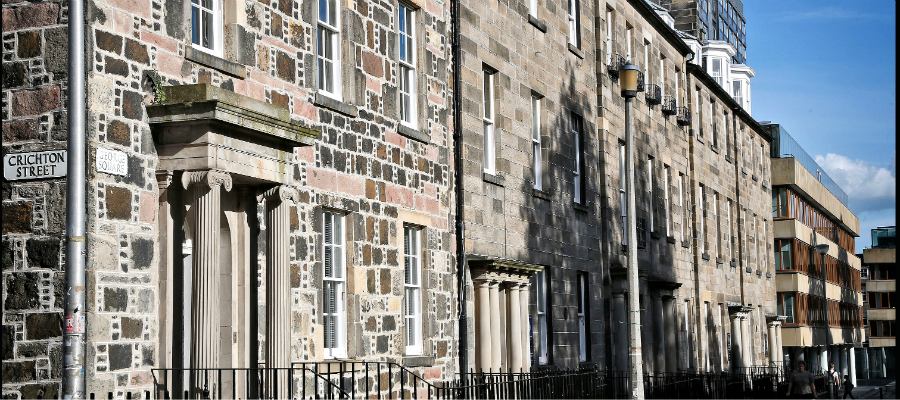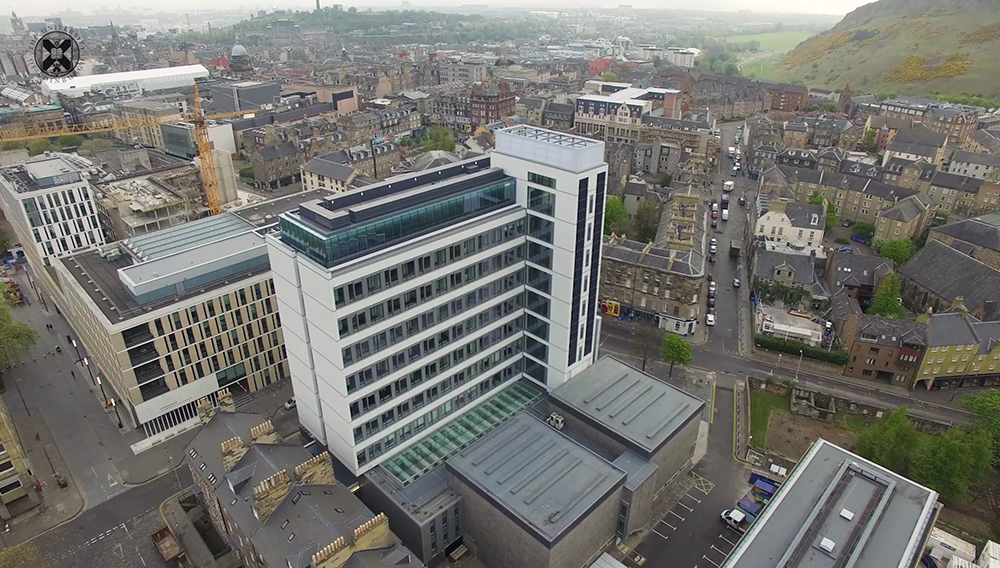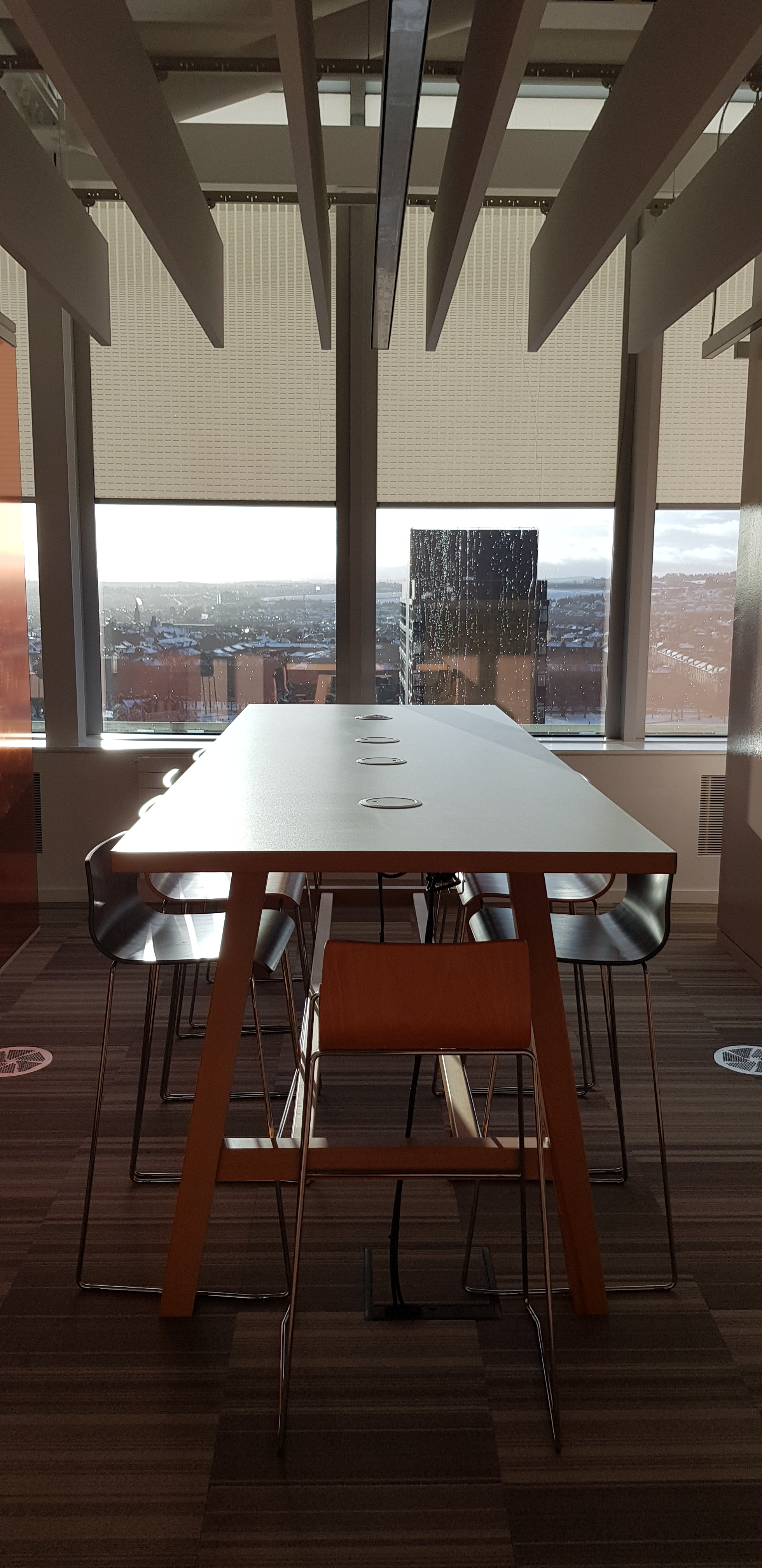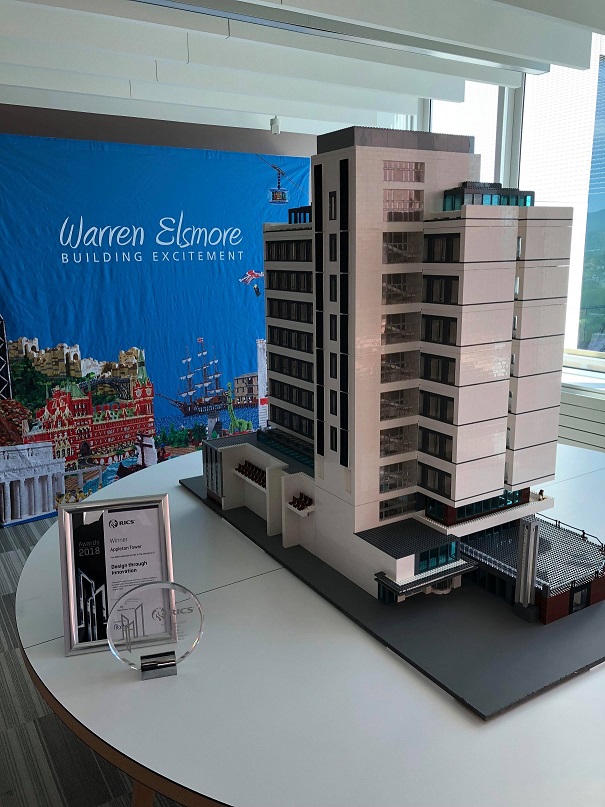
George Square, origins
The square was planned in 1766 by architect James Brown, and at the time represented the most ambitious new development yet attempted in the city. It was the first development outside the old city walls, and a precursor to the New Town. It soon became a fashionable and sough after location. Some of its famous residents include Sir Walter Scott, Sir Arthur Conan Doyle, and the athlete Eric Liddell.
George Square demolition, 1960s
Starting in 1914 University of Edinburgh gradually increased its ownership of properties in the square until by the 1940s it owned the entire place. Then in 1949 a controversial programme of major development was planned, involving the demolition of much of the square. Despite a huge public outcry the development started, but the destruction proved to be a turning point in focusing public attention on the plight of Edinburgh’s historic buildings. The western side of the square was saved and the remnants of many demolished houses were later used to repair buildings in the Georgian New Town.

Sir Edward Appleton and his vision
During the Second World War, the University resolved to make George Square the centre of its post-war development, and to abandon the King’s Buildings (KB) science campus. Little happened until 1949, when Sir Edward Appleton (Nobel Prize winner for Physics and the Principal from 1948 to 1965) arrived to steer the scheme to fruition. Embracing the spirit of the age, he decided to retain KB, for science buildings, foreseeing the multiplicity of technological research. Determined to achieve an architectural outcome of high quality, he brought in some of Scotland’s leading architects. Sir Basil Spence was appointed planning consultant, in 1954. Spence’s imaginative drawings determined the template of the new George Square, proposing a series of towers to the east, of which but two were realised. The then-professor of architecture, Sir Robert Matthew, was called upon to design the Arts Tower, (40 George Square).
Aware of the contemporary fear of an emerging schism between the arts and sciences, Appleton decreed that science undergraduates should spend their first year in the city-centre campus, and be encouraged to take courses in the humanities, as well as participate in student societies and extra-mural activities, so that undergraduates, and indeed staff, from different faculties would mingle. Appropriately, following Appleton’s death in 1965, his “Fundamental Science Building”, designed by Alan Reiach, was named after the Principal.
Construction of Appleton Tower

Originally the building included seven floors of laboratory accommodation, surmounting a double-height circulation concourse, with various facilities provided in its podium. A block containing five lecture theatres is attached to its southern side. The tower’s completion in 1966 created a symbolic manifestation of Appleton’s vision for integration of the arts and sciences, with twin towers, DHT (Arts) and Appleton (Sciences), dominating the University's Central area.
An associated teaching block for east George Square, and a Mathematics and Physics building for the ‘car park site’ on north Crichton Street, were intended to interlock at this sector. The latter project was relocated to King’s Buildings in the 1960s, resulting in the James Clerk Maxwell Building, and the succeeding project for the site, the Dental Hospital and School, was abandoned for lack of funding. The Tower was left isolated - and without a proper entrance, as this had been intended to be via connection to further construction.
Refurbishments 2006-2017
Three floors (3-5) of the building have been used by the School of Informatics since the Edinburgh Cowgate fire (December 2002), and these have been completely refurbished, creating a modern environment for teaching and research (Though research has all but moved completely to the Informatics Forum). The five lecture theatres and teaching space on the ground and first floors were refurbished over the summer of 2006, and the remaining floors (basement and 6-8) were also renovated in 2007.

The Tower's external cladding of pre-cast concrete slabs with mosaic detailing has suffered badly from the Scottish weather. Contrary to rumour, however, the structure has been declared sound. The University plans to complete the renovation by recladding the exterior, with a planning application were submitted in late 2013 and approved in January 2014. At the same time University decided to rework the podium, create a proper entrance, and integrate the Tower with the surrounding environment of Edinburgh's Southside. The refurbishment was completed on 7 November 2017.
Although the Fundamental Science Buildings were not completed, preparatory demolition of Bristo Street, to form the adjoining Crichton Street site left the University with an embarrassing gap site, which remained as an open, windswept car park for over forty years until the development of the Informatics Forum.
Appleton Tower, Level 9
During the latest refurbishment of Appleton Tower it was decided to add a top level to the building. Inspired by the original Reiach design it’s minimalistic and uses glass and metal to achieve industrial, brutalist look.
The bespoke, state-of-the-art study suite is a fit-for-purpose area for the sole use of Informatics final year students. Until March 2020 it had been used for quiet study as well as a social space. It is currently closed pending a safety review.
Level 9 has some of the best views in Edinburgh. Some say it's because you can't see Appleton Tower. In fact, they are breathtaking, especially on a clear day, with a complete panorama of Edinburgh and surrounding areas.
Criticism
The geneticist Steve Jones has nominated "the ugliness of the Appleton Tower" as one of the wonders of the world for a BBC2 TV show.
Early in 2005, a student newspaper launched a campaign to nominate it for the Channel 4 series Demolition – a series about the "worst buildings in Britain". The Tower did not make the final twelve. Later, in the same year, Historic Scotland considered giving the building listed status, but after opposition it was removed from the list.

Appleton Tower Today
School of Informatics occupies the basement (workshops), level 3-9. Level 4 is shared with School of Philosophy, Psychology and Languages. Level 8 is shared with commercial tenants.
During the Edinburgh Festival Fringe each August, the building is commandeered by the Edinburgh Festival Fringe Society for use as a hub for performers and press, and goes by the name of Fringe Central. The venue is designated as Venue 2 of the Fringe. With Edinburgh festival Fringe cancelled in 2020, Appleton Tower remained closed and empty in August, however earlier in the lockdown it housed a small faceshields factory established by the School of Informatics researchers and technicians.
In 2018 the School of Informatics commissioned a local artist Warren Elsmore and his team to build a LEGO® replica of Appleton Tower using 12000 bricks. Warren was also responsible for constructing the LEGO® National Museum of Scotland to celebrate the Museum’s 150-year anniversary.

